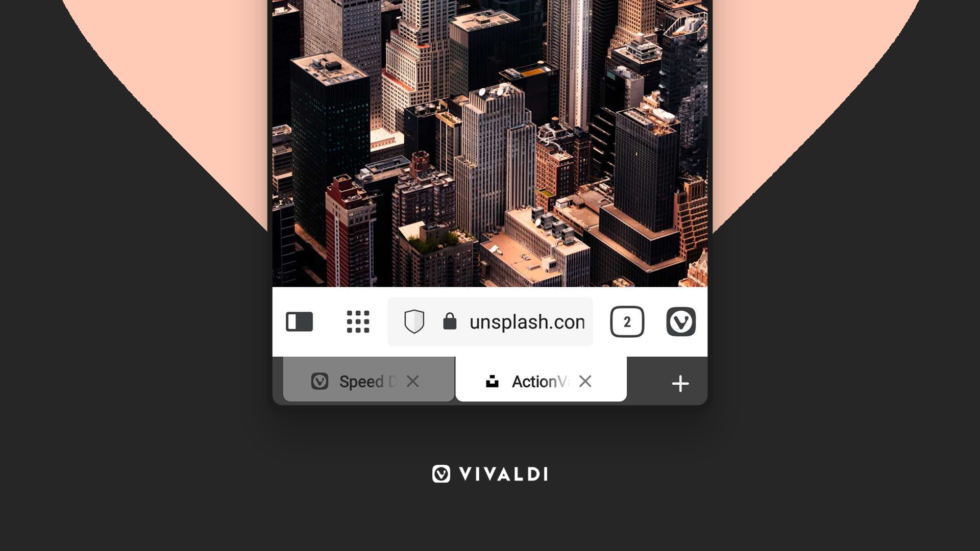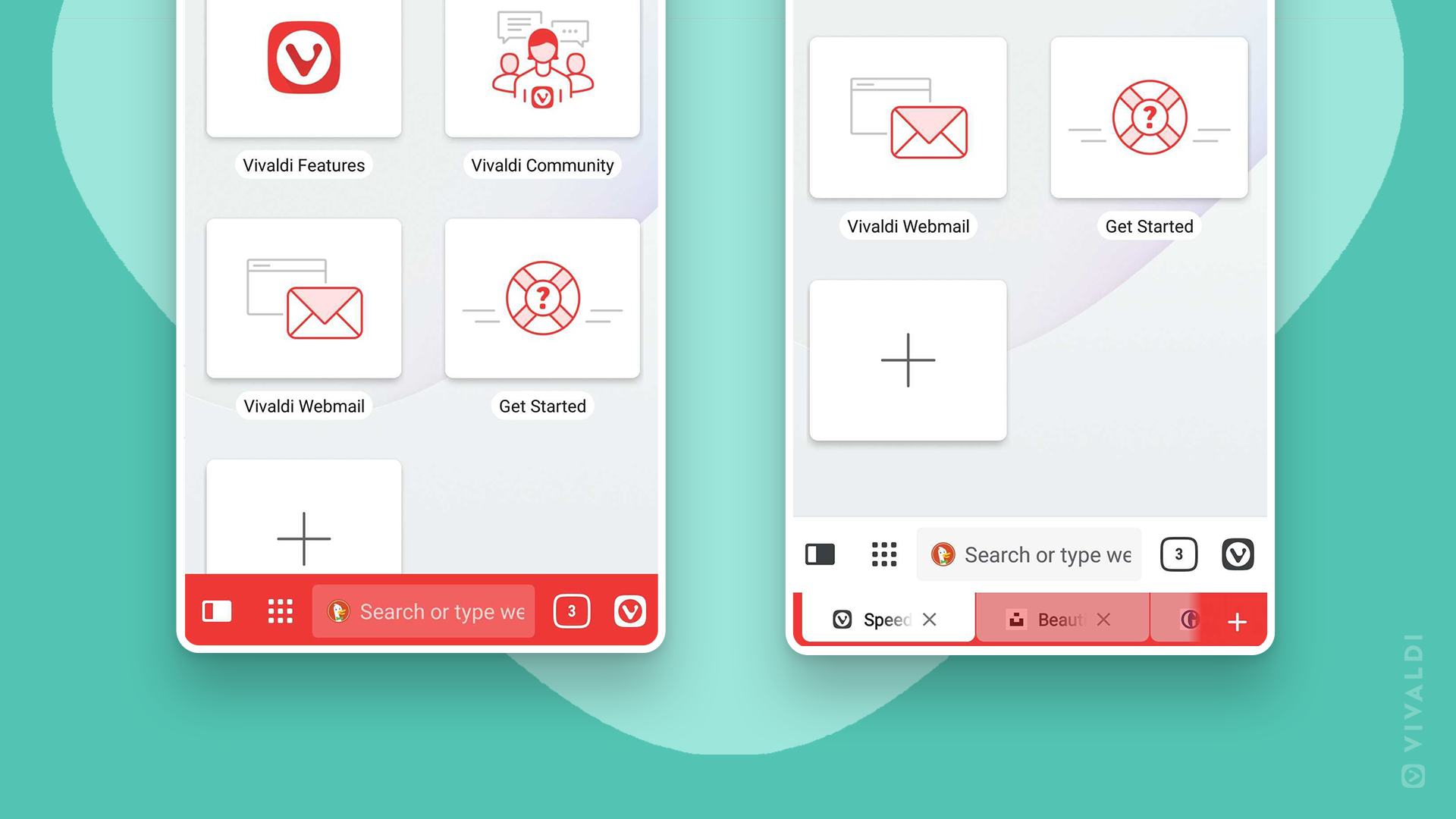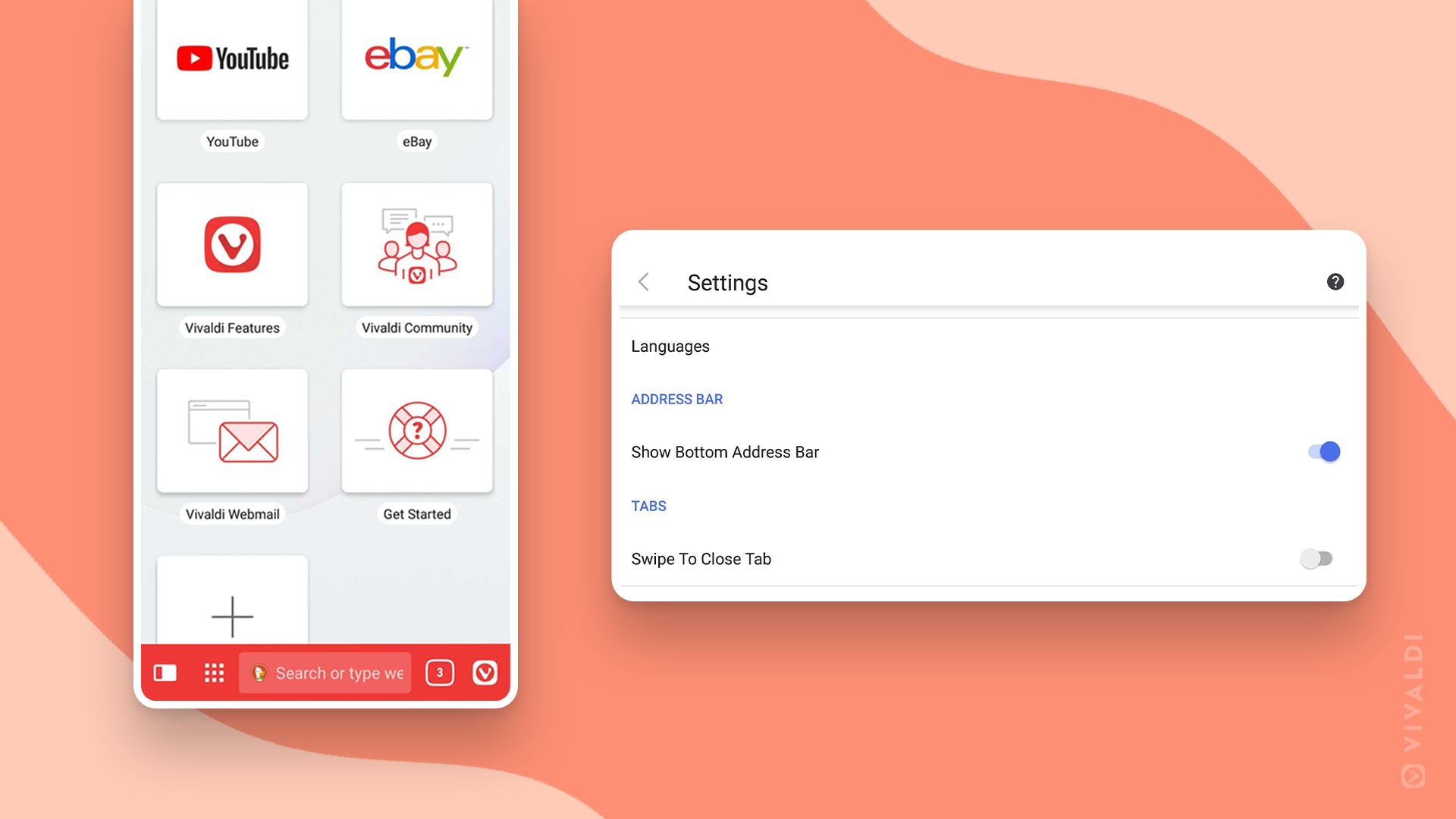
OSLO, Norway – September 10th, 2020: Exactly one year after unveiling the first beta of Vivaldi on Android, Vivaldi Technologies releases its new browser version on Android devices — Vivaldi 3.3 — with Address Bar and Tab Bar that are now configurable.
Users can move the Address Bar and Tab Bar to the bottom or keep them at the top of the user interface according to their preference. The built-in Tracker and Ad Blocker now support full-page blocking helping users to browse more safely.
The new version of the Vivaldi browser is available for free on mobiles and tablets running Android 5 or higher. It can also run on up-to-date Chromebooks.
Address Bar and Tab Bar, now configurable

Users are not confined to pre-determined and locked settings in Vivaldi. Instead, the browser adjusts to the workflows and preferences of users.
And in this update — once again responding to suggestions from users — Vivaldi adds more flexibility and options to the Address Bar and Tab Bar that are placed by default at the top of the user interface.
Very recently, based on user feedback, Vivaldi moved more functionality to the bottom of its user interface such as switching between Panel functions, Bookmarks, History, Notes, and Downloads. Similar buttons for enhanced tab functionality were also moved to the bottom allowing users to switch between different types of tabs.
And now users can move Vivaldi’s Tab Bar (the unconventional real desktop-style tabs) and Address Bar to the bottom or keep them at the top according to their preference.
With configurable Address Bar and Tab Bar, users can make Vivaldi’s user interface their own and keep the browser functionality within easy reach.
Unlike other mobile browsers, the Tab Bar (used for switching between tabs) not only solves the problem of out-of-control tabs but, when enabled at the bottom, is easier to use — especially one-handed and on phones and tablets with larger screens.
Users can also move and remove these configurable bars for that crucial screen space on mobile devices, if needed. Disabling the Tab Bar is an option in the Settings. Moving the Address Bar to the bottom of the user interface creates more screen space at the top, an area where eyes might naturally focus.
Head to the Settings > Appearance, click on ‘Address Bar at Bottom’. Or simply revert to its original placement if it does not fit in a certain workflow.

These new additions also add to the variety of options in Vivaldi that are distinctive from other browsers — such as assigning nicknames to search engines and switching quickly between them, taking a screenshot of a full web page with the Page Capture tool, disabling the Status Bar for more screen space, syncing encrypted data safely between different installations of Vivaldi on desktop and Android, and much more.
“Everyone is different. We are creating a browser that fits you. This has been our goal from the very start,” Vivaldi CEO Jon von Tetzchner says.
“Effective navigation is crucial on mobile devices and we’ll continue to add more options so that you can browse faster and more intuitively.”
The built-in Tracker and Ad Blocker, with full-page blocking support
In Vivaldi’s previous version, users got options to enable more blocking lists in the browser, including country-specific blocking lists, and even add their own custom lists.
This is because users should have the final say on how sites are displayed and which sites should know about them.
Thus, Vivaldi continues to add more capabilities that can be used in blocking lists to block pages. In this update, the Tracker and Ad Blocker gets full-page blocking.
Users providing their own sets of rules can now use the ‘document’ option in block rules to block whole pages. This is a step towards greater compatibility with the uBlock Origin rule set.
